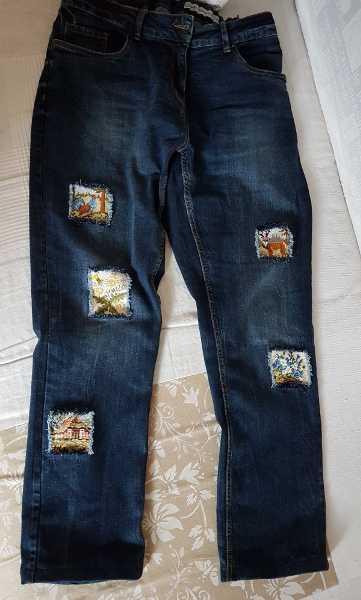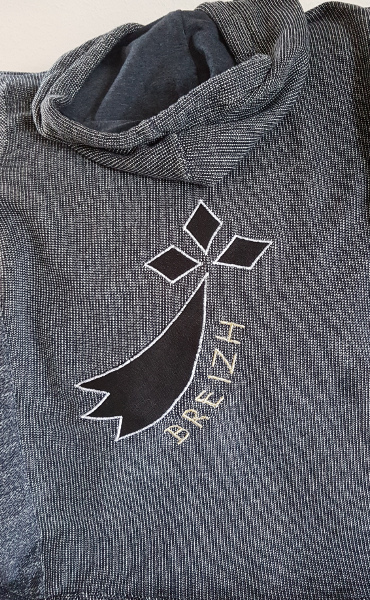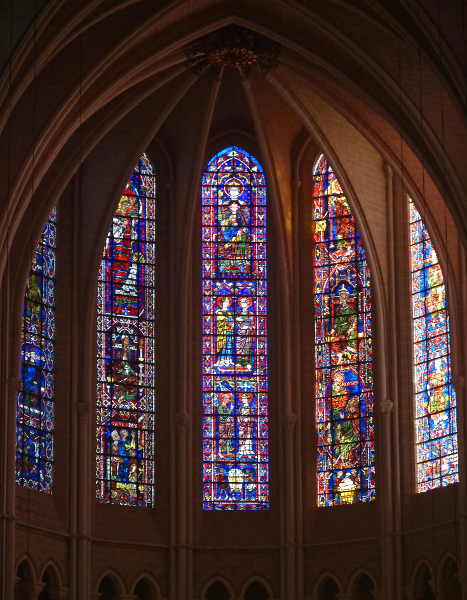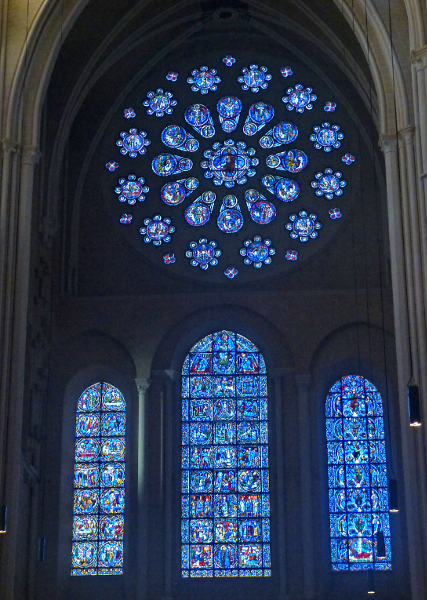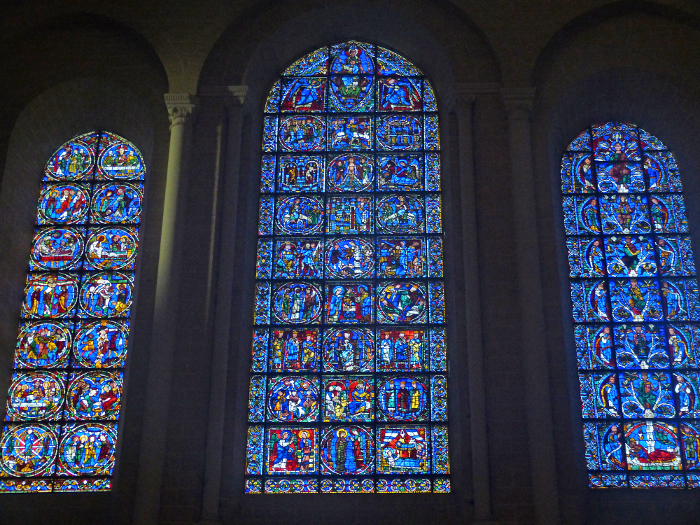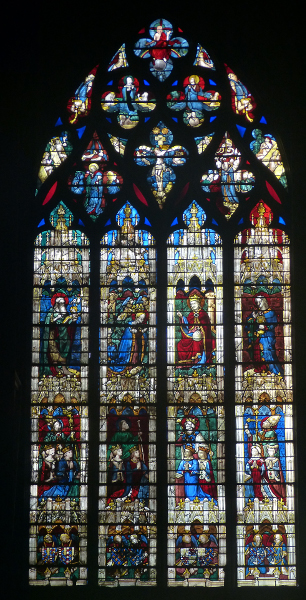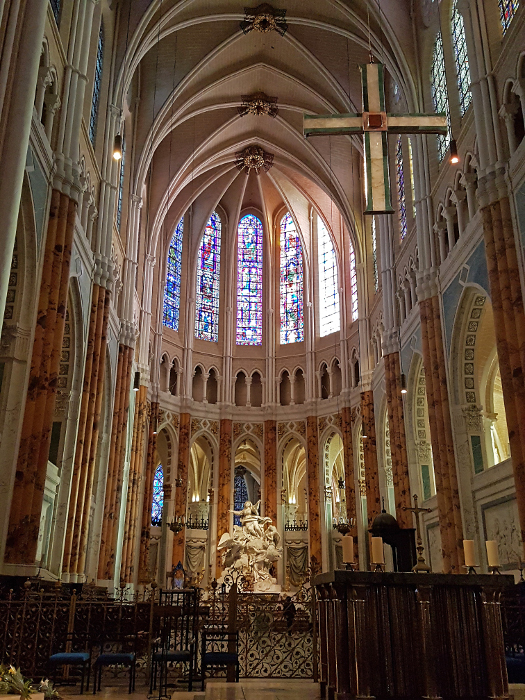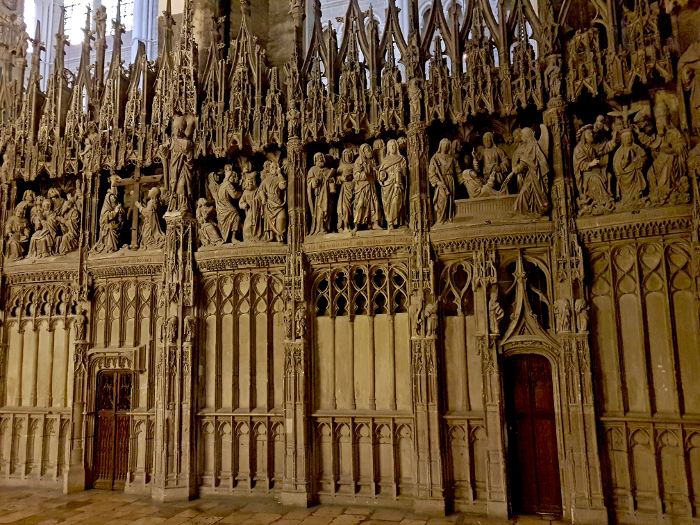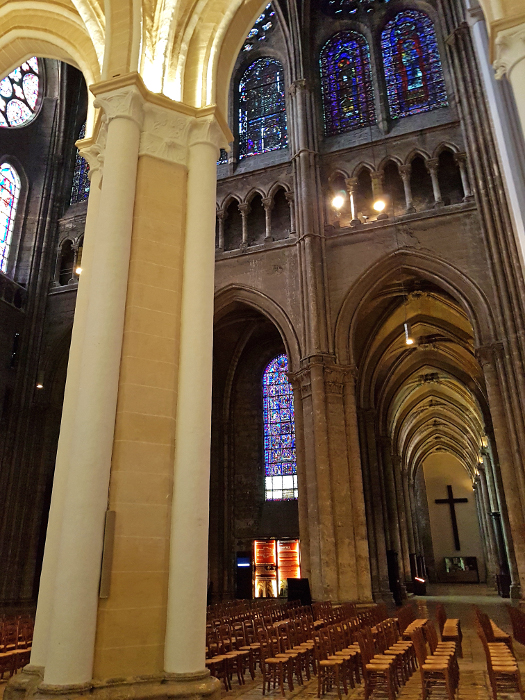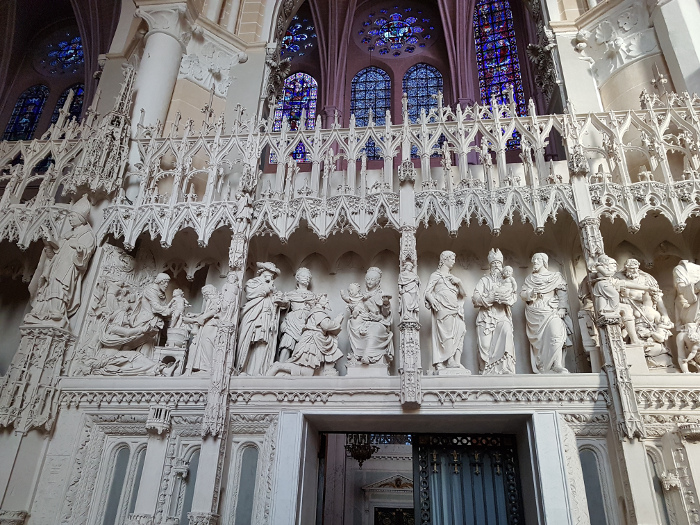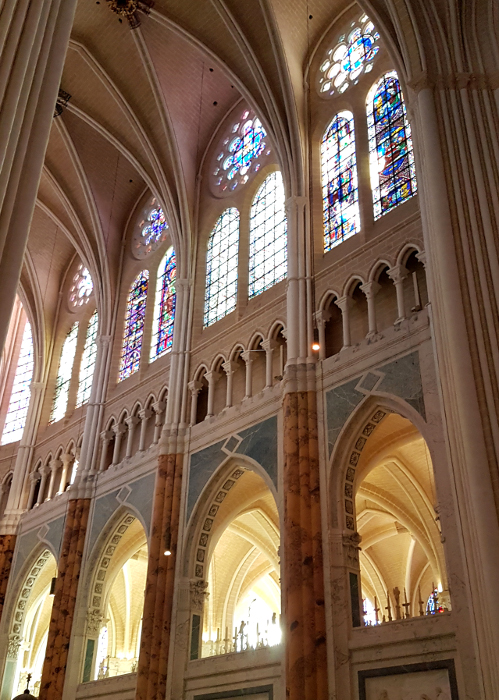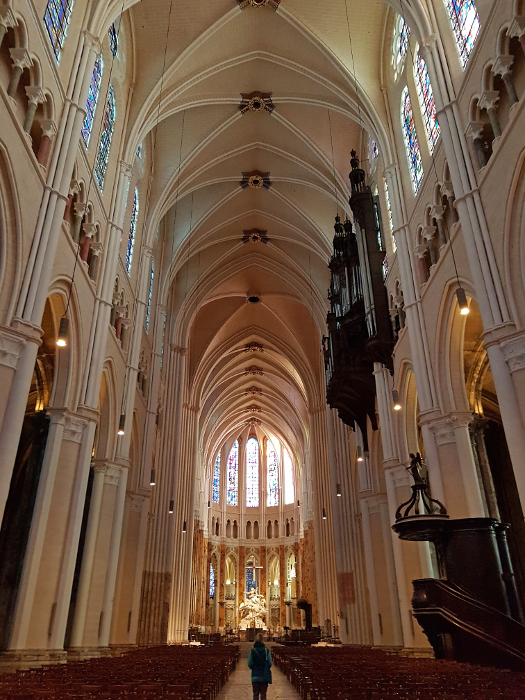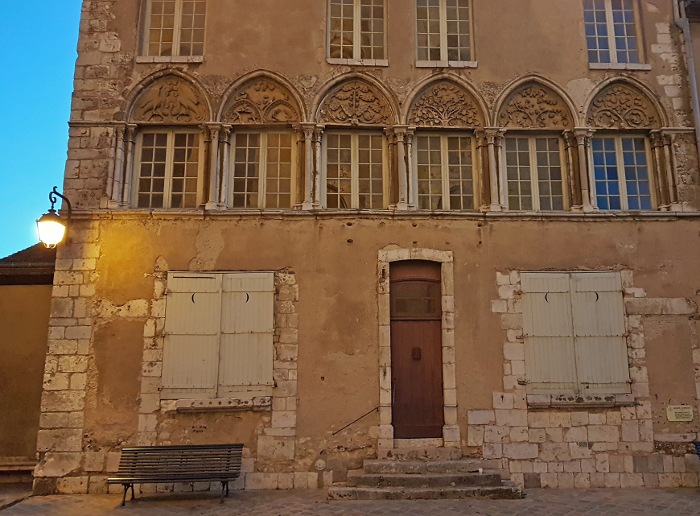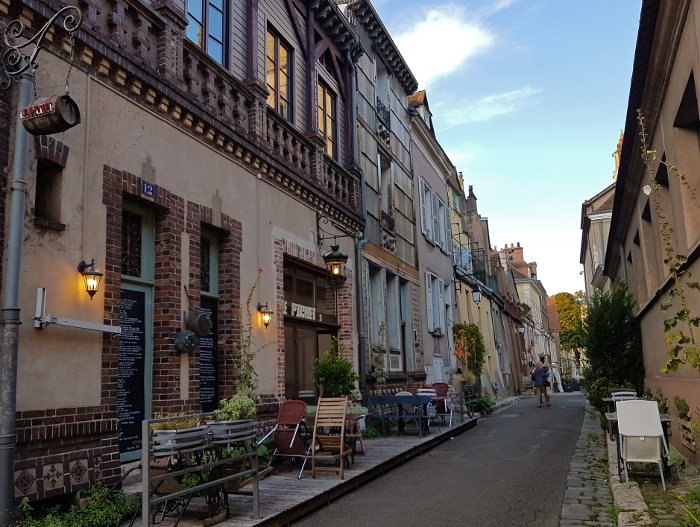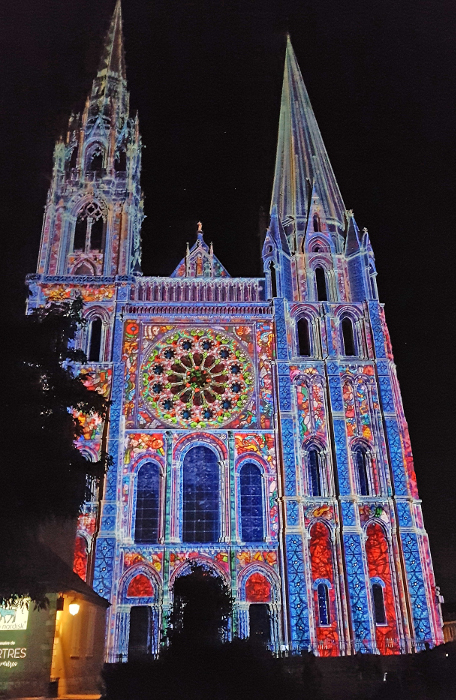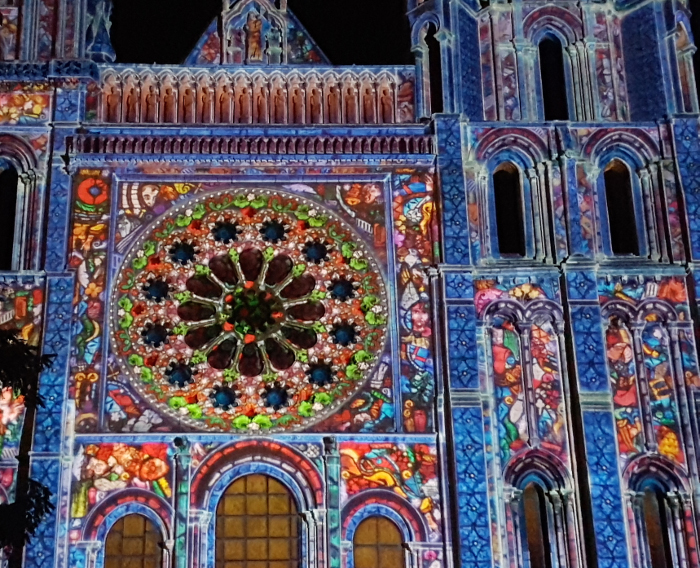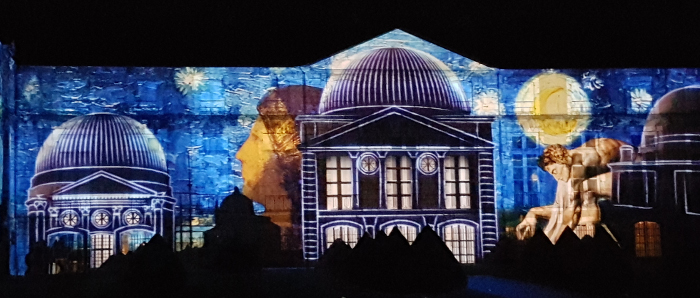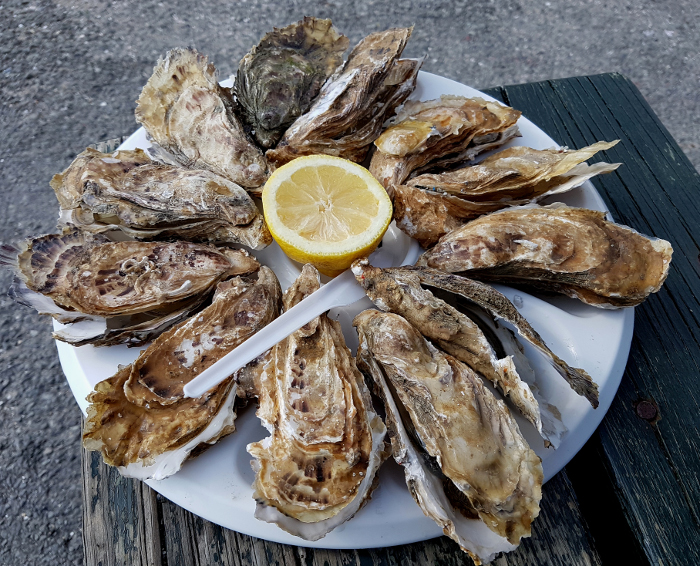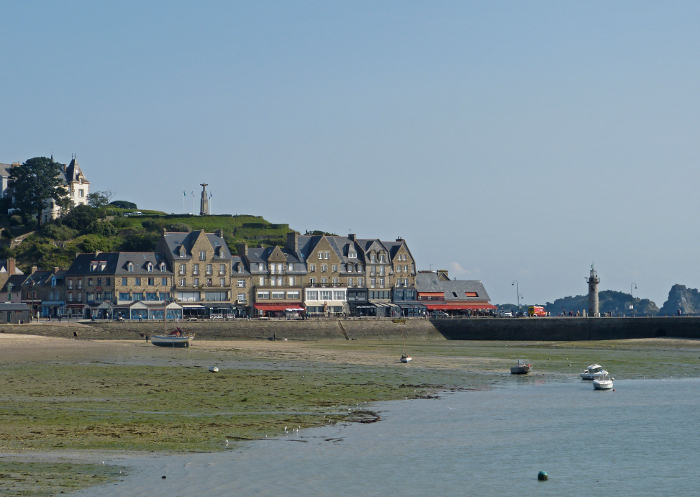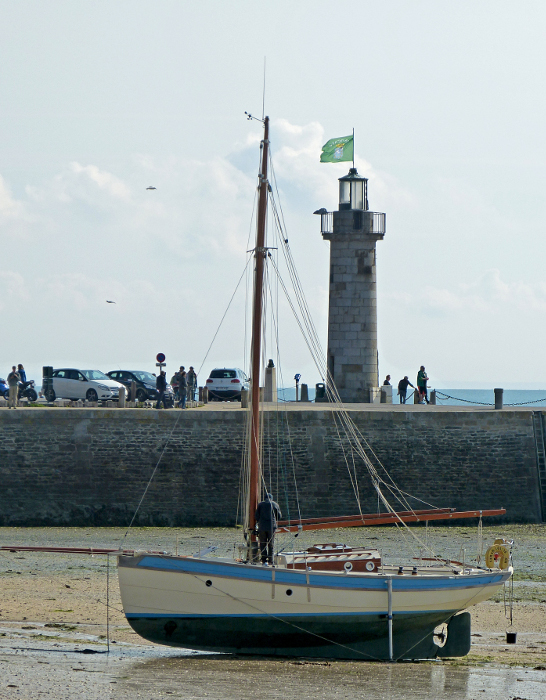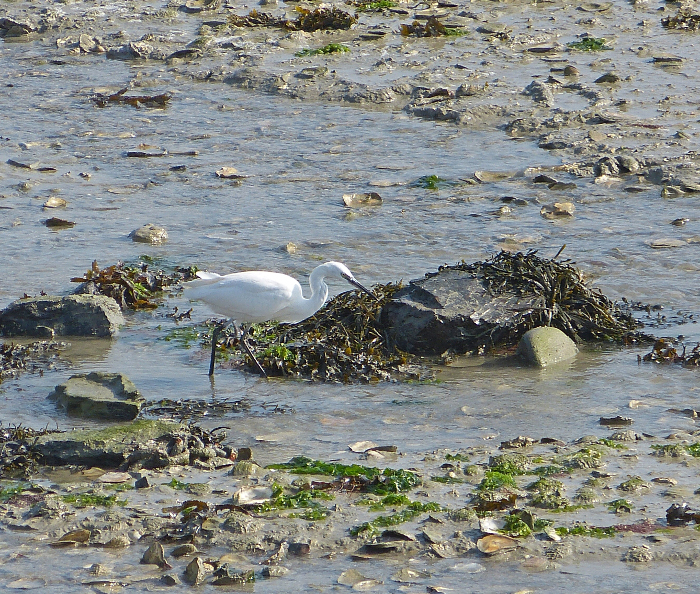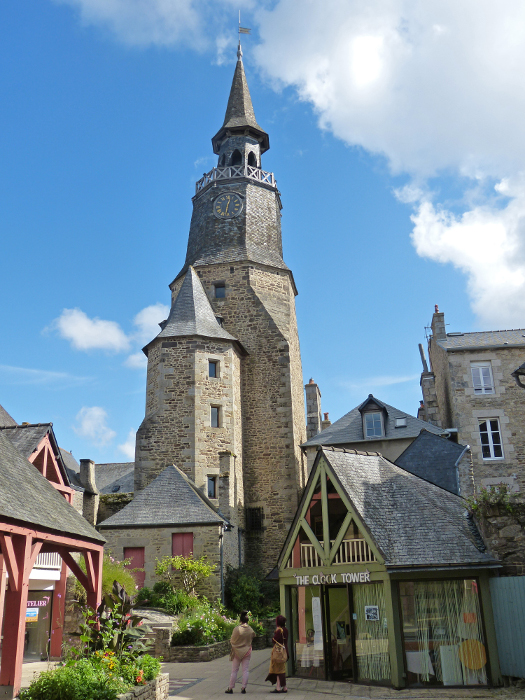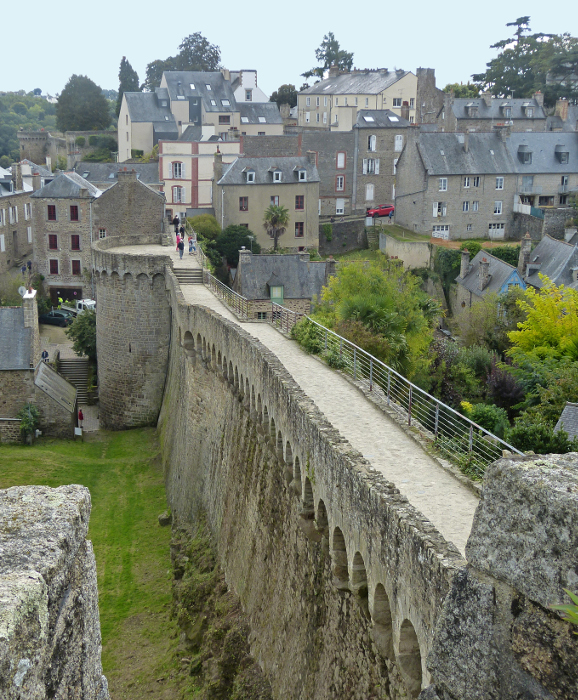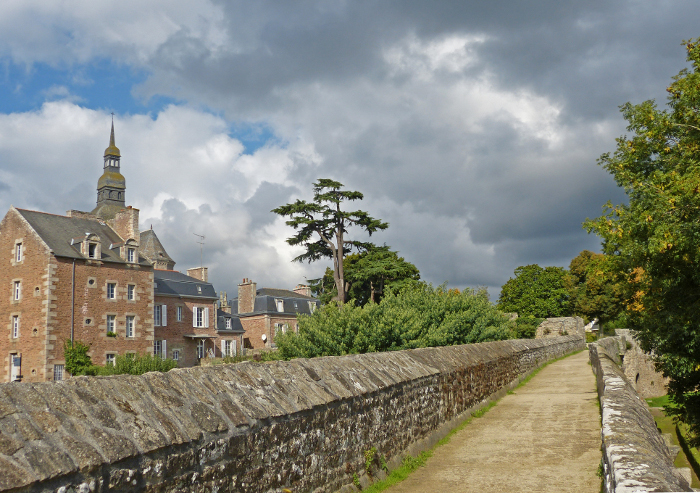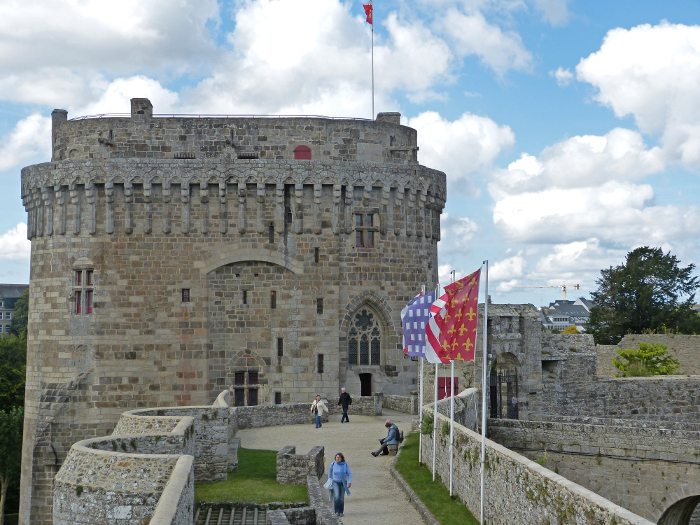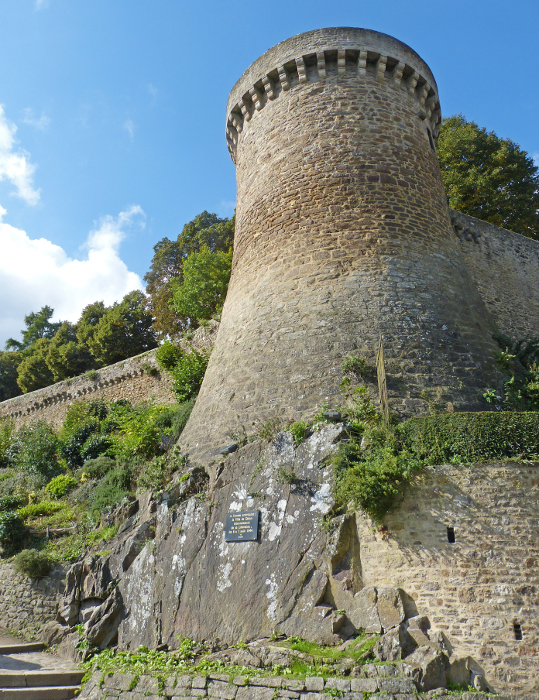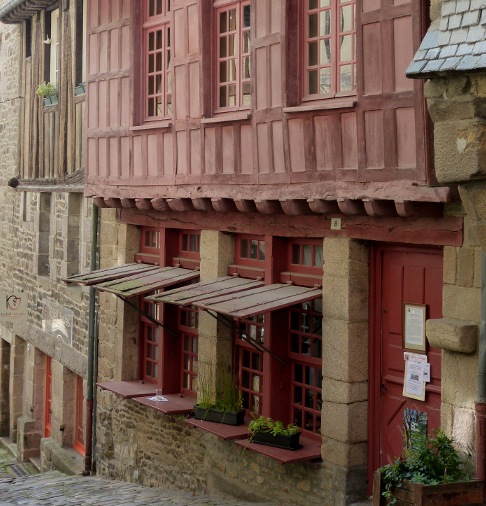So, da bin ich wieder – die letzte Woche war zu voll mit Terminen, ich konnte mich nicht um den Blog kümmern. Dabei fehlen ja noch zwei Beiträge von meinem Bretagne-Urlaub! An meinem vorletzten Tag war ich nach dem Austernessen in Cancale ja nach St. Malo gefahren, wo ich eine Bootstour gebucht hatte. Leider wurde das Wetter zunehmend düsterer, mit starkem Wind. Aber: es blieb trocken! Also: alles an Bord!
After a week full of work and other obligations I’m back now with the last two posts about my trip to Brittany. Arriving at St. Malo after my lunch of oysters in Cancale, the weather deteriorated – heavy clouds and a strong wind made me fear that the boat trip I had booked would be a bust – but, no, it stayed dry! So: welcome aboard!
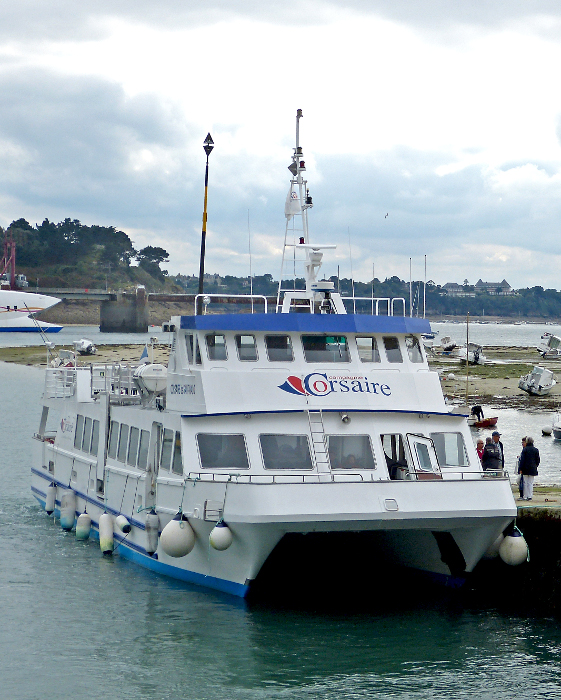
Die Ausflugslinie nennt sich „Corsaire“, der „Korsar“, oder „Freibeuter“. Letzteren werden wir im Lauf dieses Beitrags noch einmal begegnen (die Franzosen lieben Freibeuter!); da werde ich dann auch den Unterschied zwischen „Pirat“ und „Freibeuter“ erläutern – oder kennt Ihr den schon? Doch nun heißt es erstmal: „Leinen los!“
The excursion line is called „Corsaire“ – the „privateer“. In this post we will encounter this term again – the French love their privateers! – and I’ll explain the difference between a pirate and a privateer, if you don’t know already. But for now it’s „Cast off!“

Abseits der Fahrrinne ist mal wieder Ebbe…
Outside the fairway it’s low tide once again…
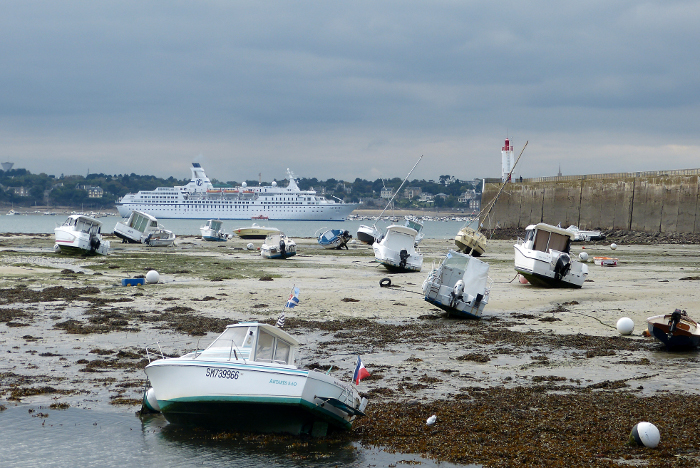
St. Malo ist ja auch eine sehr befestigte Hafenstadt, die, wie manche anderen alten Städte, ein „intra muros“ und „extra muros“ kennt – also die Altstadt innerhalb der Mauern und die jüngere drumherum. Allerdings sollte man beim Betreten der Mauern etwas vorsichtiger sein…
St. Malo has massive fortifications and consists of a town „intra muros“ and one „extra muros“, like several old cities. When climbing the ramparts you should be a bit more careful, though…

Zunächst fahren wir aus dem Hafen nicht gleich auf’s Meer, sondern in die andere Richtung, ein Stück die Rance-Mündung hinauf. Da der Tidenhub hier sehr stark ist, gibt es nämlich ein Gezeitenkraftwerk, das mithilfe von Turbinen aus den Pegelunterschieden zwischen Ebbe und Flut Energie produziert. Bei seinem Bau in den 60er Jahren war es das erste – und lange Zeit das größte – Gezeitenkraftwerk der Welt. Hier sieht man nur eine große Mauer – alles Wichtige ist innerhalb.. Oben auf dem Damm geht eine Straße lang.
When leaving the harbour, we at first don’t go out to sea, but in the other direction: a short way up the mouth of the river Rance, where a tidal power station uses the high tidal range to produce electricity with the aid of water turbines. When it was built in the sixties, it was the first – and for a long time the biggest – tidal power station of the world. Here we just see a big wall, the dam, on top of which there is a road. The important parts lie inside..
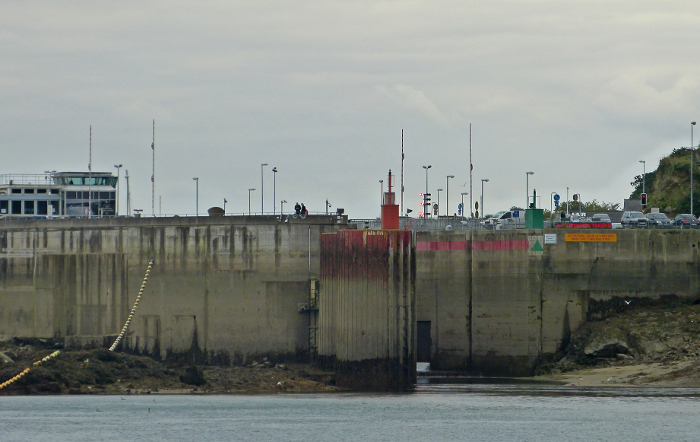
Abgesehen von Möwen halten sich auch Kormorane gern hier auf:
Not only gulls, but also cormorants love these waters for easy fishing (and relaxing):

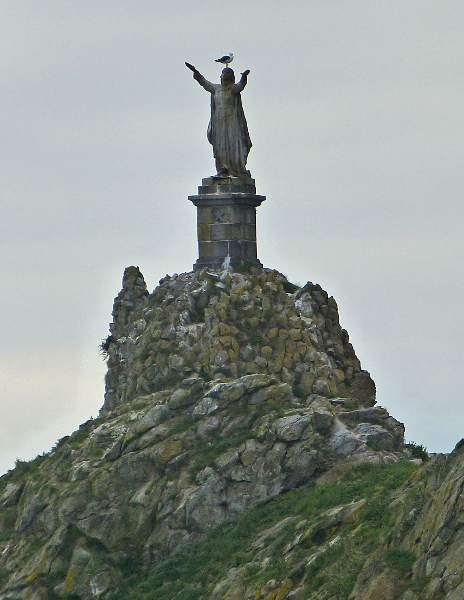
Vor lauter Fotografieren hatte ich die Erklärung verpasst, wen diese Statue darstellt: Jesus, Maria oder den Mönch, der St. Malo den Namen gab? Die Möwe interessiert das auch herzlich wenig – solange sie einen guten Aussichtspunkt hat! Unten: Picknick in den Felsen!
Klicking away on my camera, I had missed the explanation about this statue: is it Jesus, St.Mary or the monk who gave St. Malo its name? Well, the gull isn’t interested in this knowledge at all – as long as the statue provides a perfect lookout! Below: picnic on the rocks!
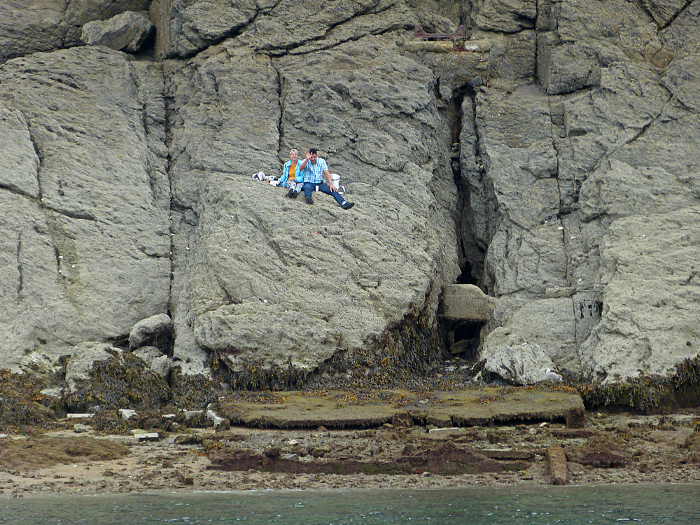

Doch dann ging es ein Stückchen hinaus durch den Hafen auf die See. Dabei begegnet man den verschiedensten Booten und Schiffen: oben ein schnelles Passagierboot (Katamaran), diese Linie verbindet St.Malo mit den Kanalinseln. Unten: ein „kleines“ Kreuzfahrtschiff.
But now we turned towards the sea, passing the harbour and meeting a lot of different boats and ships: above you see a fast passenger boat (catamaran) which runs a connection to the channel isles. Below: a „small“ cruise ship.


Oben: eine Segelschule. Unten: Der „Renard“ (Fuchs), ein Nachbau des berühmtesten Freibeuterschiffs (!) Frankreichs. Also: ein Pirat ist ein Ausgestossener, ein Krimineller mit ausschließlich Eigeninteressen. Ein Freibeuter dagegen hat einen Freibrief seines Herrschers, dass er (nur) die gegnerischen Handelsschiffe kapern darf. In früheren Kriegen unter den Seemächten war das auf allen Seiten gang und gäbe – wie z.B. der Engländer Francis Drake gegen Spanien und Portugal. Im Krieg Frankreich gegen England war es der Franzose Robert Surcouf, der von St. Malo aus mit seinem „Renard“ die Engländer das Fürchten lehrte! Das Schiff ist erstaunlich klein, aber extrem wendig, und zusammen mit einem fähigen Kapitän und einer ordentlichen Mannschaft brachte es 47 englische Schiffe auf, welche häufig deutlich größer waren. (Das verwundert nicht, wenn man bedenkt, mit welch winzigen Booten heute somalische Piraten riesige Tanker kapern!) Surcouf erbeutete solchen Reichtum, dass er sich mit 35 Jahren zur Ruhe setzen konnte!
Above: a sailing school. Below: the „Renard“ (fox) , a faithful replica of France’s most infamous privateer’s (!) ship. So: a pirate is an outcast, a criminal who only seeks his own interests. A privateer had the official permission of his sovereign to capture (only) the enemy’s traders. In former times this was common practice during wars between naval powers. Just think of Francis Drake who captured Spanish and Portugese ships „for England“. When France fought England, it was the French privateer Robert Surcouf of St. Malo with his „Renard“ who put the fear of God into English merchant sailors! The ship seems quite small, but it’s very agile, and with a competent captain as well as a capable crew it captured 47 English traders, some of them much bigger (which is no surprise when you think of the tiny boats of today’s Somali pirates who capture gigantic tankers!) Surcouf made so much booty that he could retire at the age of 35!

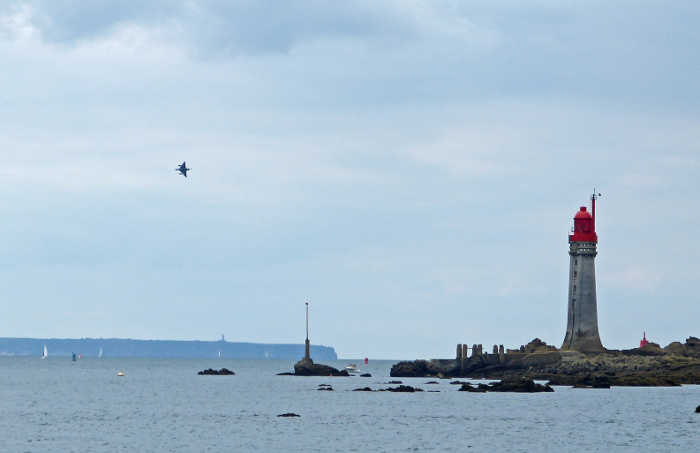
Oben: der „komische Vogel“ dient allerdings nicht der Piratenabwehr, sondern ist Teil einer Übung der französischen Luftwaffe…
Above: this „strange bird“ doesn’t look for pirates but is part of an exercise of the French airforce…

Oben: ein Teil der Befestigungsanlagen, die ein Schüler des berühmten Vauban errichten ließ.
Above: this fort is part of the fortifications, built by a scholar of the famous Vauban.

Dann ging es allmählich zurück in den Hafen…
Then it was time to return to the harbour…
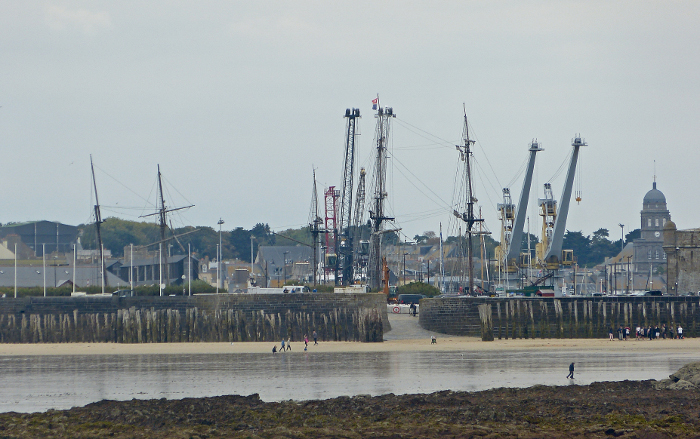
Komplett dunkelgrauer Himmel inzwischen, doch noch kein Regen, und wenigstens einen kurzen Spaziergang durch und entlang der Altstadt wollte ich mir nicht entgehen lassen:
In the meantime the sky was dark grey, but still no rain, so I at least wanted to take a peek of the city „intra muros“:

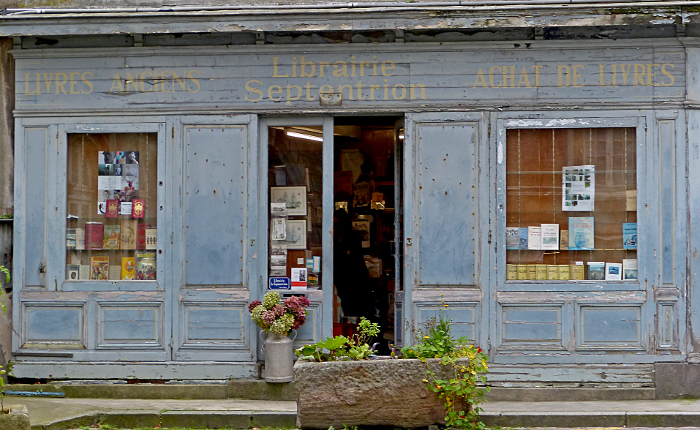



Ein wunderschön nostalgisch gestaltetes Karrussell!
A beautifully nostalgic carousel!

Mädchen und Pferde…
What’s it with girls and horses?

Die Fregattte „Etoile du Roy“ ist auch ein Nachbau, der stark von der HMS Blandford(1741) inspiriert wurde. Sie wurde für eine italienische Filmserie nach dem Roman „Horatio Hornblower“ gebaut. Sie ist nicht nur zu besichtigen, sondern auch für Gruppen als Ausflugsschiff zu chartern – vielleicht sollte ich das mal für unseren nächsten Betriebsausflug vorschlagen? 🙂
The frigate „Etoile du Roy“ also is a replica the design of which has been inspired by the HMS Blandford (1741). It was built for an Italian TV series after the novel „Horatio Hornblower“. Now you can visit it or charter it for a group excursion – perhaps I should propose this for our next works outing? 🙂

